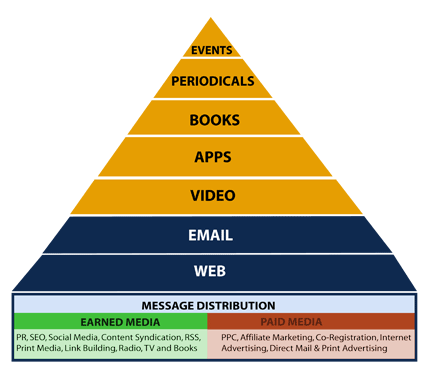The emergence of new entry points makes online marketing more complicated for publishers.
Our customers — the consumers of the information you and I publish — now have more options than ever for experiencing our content. The user has come to expect content from us on numerous platforms, and woe to the publisher who ignores any opportunity or entry point.
Users want high fidelity content — both in person and online — and gather the information they seek across many media platforms.
Today, the Worldwide Web, whether via Google, Facebook, Twitter or any of the hundreds of other portals, is the launching point for most information seekers.
Users have favorite portals on the web. Google and Facebook are the most popular, as measured in user time spent, with Facebook taking a slight lead as of August 2010. In terms of time spent searching for information, Google leads in popularity.
Social media experts have begun to question how users specifically spend their time and attention on the Facebook and Twitter websites. The evidence indicates that users don’t gather information on those websites in the same way that they use Google.
In practical use, Google functions more like an online substitute for the old, reliable, telephone directory yellow pages. Google has become the go-to website for users seeking specific information or the answer to a clearly articulated question.
Facebook and Twitter can partially fill that requirement, but these social media websites are also sources of entertainment, and serve as a substitute for phoning, texting and emailing.
Users turn to Google to find the source of information they believe exists, when they don’t know where it’s located. Users turn to social media sites to spend time with people they already know and trust.
Because social media and search websites create more user entry points to the WWW, the marketing process for publishers has become more complicated. Users can now discover your content through search media, paid media or social media.
Email is still the most widely used Internet application. Fifty-nine percent of the U.S. population uses email every day. Email is the channel by which these users get personal correspondence, bank statements, credit card receipts, and a host of other communications that enable them to manage their multifarious 21st Century lives.
[text_ad]
Content marketing principle #2: Use Many Platforms
In order to succeed as publishers, we must address all the media platforms by which users can access our content. Building a base of loyal email subscribers is Job One. A distant second, but still an important goal, is building a strong base of fans and followers on social media sites.
An individual who subscribes to your email newsletter, allowing you to deliver content to his inbox every day, is far more committed to you and your brand than someone who follows you on Facebook or Twitter.
As we move up the media platform, it’s clear that successful, special-interest publishers now require additional media competencies, including video, software application development (apps), books and live events.

The Mequoda Pyramid
Video has become the favorite medium for delivering instructional content, with both DVDs and online video growing in popularity.
Apps, or standalone software programs, include entertainment, time and resource management, trading and banking software, and much more. There are currently more than 250,000 apps available from Apple for the iPhone, with the average owner using 16 or more apps regularly.
The growing popularity of Apple’s iPad and Amazon’s Kindle Reader have boosted book sales and book readership for the first time in decades.
Webinars have become the most popular and highest grossing profit center for many online publishers in some B-to-B sectors.
And live events, with their ability to deliver high fidelity, “high touch” contact and information, are still the preferred content delivery medium for those who can afford “top of the pyramid” experiences.
In my next blog post we’ll discuss content marketing principle #3: Leverage Organic Media.


